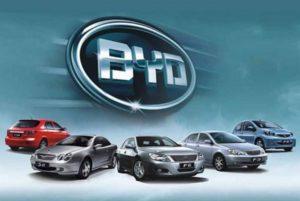 There continues to be a symbiotic relationship between the U.S. and China in plug-in electric vehicle manufacturing, sales, and technology development. Government subsidies are helping bring sales up, as are introductions of new models that are gaining more interest from consumers in both China and the U.S. More EVs are coming in the near future, and in more type classes, including a minivan and crossover SUVs in the U.S. market and diverse offerings in China. The Beijing Motor Show in April and May showed off an intriguing lineup of new EVs rolling out from BYD, Changjiang, Dongfeng, Brilliance, Beijing Auto, Changfeng, JAC, and others. The symbiotic relationship comes from alliances between global automakers and Chinese companies for EVs to be sold in China and eventually in other markets; and between the Chinese and American governments pushing for clean technologies and emissions reductions. There’s also a list of manufacturers and suppliers based in the U.S. that are building electric cars and technologies that will be shipped overseas and sold in China.
There continues to be a symbiotic relationship between the U.S. and China in plug-in electric vehicle manufacturing, sales, and technology development. Government subsidies are helping bring sales up, as are introductions of new models that are gaining more interest from consumers in both China and the U.S. More EVs are coming in the near future, and in more type classes, including a minivan and crossover SUVs in the U.S. market and diverse offerings in China. The Beijing Motor Show in April and May showed off an intriguing lineup of new EVs rolling out from BYD, Changjiang, Dongfeng, Brilliance, Beijing Auto, Changfeng, JAC, and others. The symbiotic relationship comes from alliances between global automakers and Chinese companies for EVs to be sold in China and eventually in other markets; and between the Chinese and American governments pushing for clean technologies and emissions reductions. There’s also a list of manufacturers and suppliers based in the U.S. that are building electric cars and technologies that will be shipped overseas and sold in China.
EV sales in China and the U.S.: China is number one in global EV sales, with the U.S. following and Europe seeing growth as a region. Deliveries of “new-energy vehicles” surged in China by 126% to 86,374 units in the five months through May, according to China Passenger Car Association. BYD Co.’s Tang SUV was the best seller in the plug-in hybrid category, while BAIC Motor Corp.’s BAIC E series was top-selling electric vehicle in the January-May period. The Chinese auto market had more than 26,000 new EVs sold in May, a 119% increase over the same month last year, The U.S. saw a very strong EV sales month in June with 7,678 battery electric vehicles and 6,094 plug-in hybrids for a total of 13,772 EVs sold. The previous U.S. record was in December 2015, when 13,274 were sold.
BYD leads the way in China: Altogether, BYD sold a total of 61,722 plug-in electric vehicles last year, with nearly all of them being sold in China. That was more EVs than Tesla, Nissan, or General Motors sold last year individually. BYD only sells plug-in electric vehicles, both battery electric and plug-in hybrid. Warren Buffet’s Berkshire Hathaway owns about a 10% stake in the Chinese company. According to year-end figures released by the company, it delivered 31,898 of the newer Qin plug-in hybrids and 18,375 Tang PHEVs, along with 7,029 of the older all-electric e6 battery electric models, during 2015. For the first five months of 2016 (as illustrated in the chart below), the BYD Tang has been the top seller in China at 15,615 units sold. The company also sold 2,888 Denza compact hatchback plug-ins last year, which were built by its joint venture with Daimler.
Top Selling Plug-in Electric Vehicles in China – May 2016
May 2016 YTD 2016
BYD Tang 3,249 15,615
BYD Qin 2,912 7,334
Kandi K11 Panda EV 2,598 3,127
SAIC Rowe 550 PHEV / e550 2,198 6,382
BAIC E-Series EV 1,714 8,712
BYD e6 1,683 7,579
JMC E100 1,300 4,527
Chery EQ 1,269 4,384
BYD e5 1,172 2,676
JAC i EV 4/5 1,076 6,513
Role major Chinese automakers are playing: As mentioned, joint ventures such as Denza are playing a role in EV sales in China. Major Chinese automakers have their share of JVs with global automakers from the U.S., Europe, Japan, and South Korea. They’re contributing to EV sales through these partnerships and are backed by generous government incentives. If you view the Top 10 sales ranking above, you’ll notice that some of the top 10 Chinese automakers in overall vehicles sales are making inroads to EV sales. SAIC was number one in Chinese new vehicle sales last year; BAIC was number five; Chery was number nine, and the company includes the JAC brands in its lineup.
Electric-only brands: Kandi is another electric-only brand in China, along with BYD, seeing strong results in the top selling EVs. The Kandi K11 Panda EV is being manufactured through a joint venture with Chinese automaker Geely. Geely International Corp. was the number 10 selling automaker in Chinese new vehicle sales last year.
Tesla just starting in China: Tesla Motors sold 300 Model S units in May 2016, and 1,811 overall in 2016 through the end of May. It was number 19 on the top 20 plug-in electric vehicles sold in May 2016 in China – compared to No. 1 in U.S. plug-in sales during June 2016. Tesla has been investing heavily in major cities in China with retail stores and Supercharger installations.
U.S.-Based OEMs and Suppliers with Electric Drive Technologies and Chinese Investors: One of the more fascinating trends in the China-U.S. alliance in EV development has been the role that Chinese investors have played in sometimes saving U.S.-based companies. The former Fisker Automotive (now Karma Automotive) is now owned, along with lithium battery maker A123 systems, by major auto parts supplier Wanxiang Group. Here’s a list of these U.S.-based companies in EV technologies that will be interesting to watch in coming years:
- Faraday Future
- Karma Automotive
- A123 Systems
- Wheego Electric Cars
- Smith Electric Vehicles
- Protean Electric
- GreenTech Automotive
- BYD (U.S. office) offering electric buses in North America.
- Zap Jonway
SAIC partners with Disney: Chinese automaker SAIC is providing EVs for hourly rentals to Shanghai Disney Resort customers. SAIC will also provide a fleet of electric vans for shuttle service to the amusement park. SAIC currently operates a car-sharing service with 100 electric cars, as well as 100 electric buses that ferry tourists from nearby train stations, subway stations, and airports to the Disney resort.
Hyundai competing in Chinese market: As part of its initiative to roll out several hybrid, plug-in, and hydrogen fuel cell models, Hyundai Motor Co. says it will be going full-speed ahead in its electrified vehicle rollout to increase range and compete with upstart Chinese rivals. Hyundai has found out how extensive the EV market is becoming in China with foreign OEM alliances and small Chinese startups. Several global automakers are selling EVs in China, and must use electrical drivetrain components developed with a local Chinese supplier. The national rule has made Chinese suppliers more technologically savvy in key items such as motors and electrical control units, according to Hyundai.

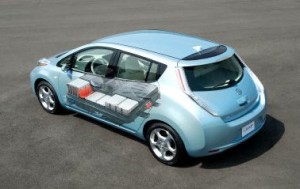 Nissan Leaf will go over 200: The
Nissan Leaf will go over 200: The 
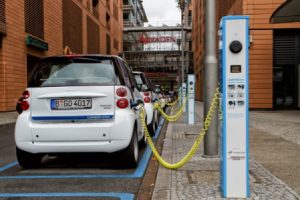 Volkswagen Group just made a commitment to change its business strategy in the wake of the diesel emissions scandal that started last September. The German automaker will be introducing more than “30 new pure electric vehicles” by 2025, while also establishing a mobility solutions division. Two other German automakers are heading down a similar path. Daimler will be introducing a long-range electric vehicle this fall at the Paris auto show, but it’s just the tip of the iceberg for its electrification strategy, according to Mercedes-Benz USA’s chief executive. BMW will be adding to the i Series with the “i Next” as the automaker combines autonomous mobility with electrification in the BMW and Mini brands.
Volkswagen Group just made a commitment to change its business strategy in the wake of the diesel emissions scandal that started last September. The German automaker will be introducing more than “30 new pure electric vehicles” by 2025, while also establishing a mobility solutions division. Two other German automakers are heading down a similar path. Daimler will be introducing a long-range electric vehicle this fall at the Paris auto show, but it’s just the tip of the iceberg for its electrification strategy, according to Mercedes-Benz USA’s chief executive. BMW will be adding to the i Series with the “i Next” as the automaker combines autonomous mobility with electrification in the BMW and Mini brands.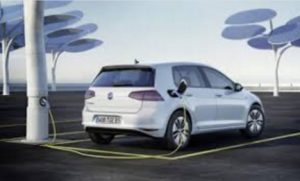 VW EV 2025 target: As Volkswagen Group emerges from its diesel emissions scandal and faces increasingly strict government mandates on reducing vehicle carbon emissions, the German automaker expects
VW EV 2025 target: As Volkswagen Group emerges from its diesel emissions scandal and faces increasingly strict government mandates on reducing vehicle carbon emissions, the German automaker expects 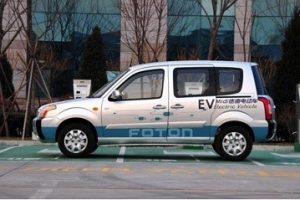 How China has become the largest plug-in electric vehicle market in the world; and how Chinese investors have put millions of dollars into U.S. companies with electric drive technology.
How China has become the largest plug-in electric vehicle market in the world; and how Chinese investors have put millions of dollars into U.S. companies with electric drive technology.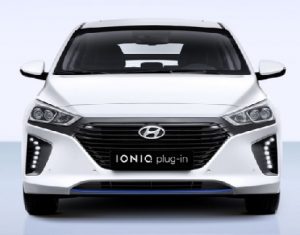 Hyundai Motor Company has been surging forward in the global auto market, and plans to become No. 2 in green car sales after Toyota by 2020. Hyundai unveiled its signature brand last month at the New York Auto Show – the Ioniq – which will be the auto industry’s first-ever model available in hybrid, plug-in hybrid, and battery-electric iterations and built on the same drivetrain. It will be rolling out later this year. Within the next four years, the Korean automaker intends to flood the market with 26 green vehicles, including hybrid, plug-in hybrid, all-electric, and hydrogen-powered models.
Hyundai Motor Company has been surging forward in the global auto market, and plans to become No. 2 in green car sales after Toyota by 2020. Hyundai unveiled its signature brand last month at the New York Auto Show – the Ioniq – which will be the auto industry’s first-ever model available in hybrid, plug-in hybrid, and battery-electric iterations and built on the same drivetrain. It will be rolling out later this year. Within the next four years, the Korean automaker intends to flood the market with 26 green vehicles, including hybrid, plug-in hybrid, all-electric, and hydrogen-powered models.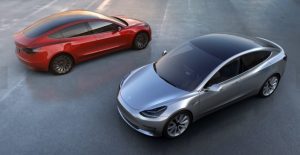 Tesla Motors marked a moment in plug-in electric vehicle history on Thursday night by unveiling what could become the first affordable electric car hitting mass-market sales; and getting hundreds of thousands of people to put money down on a car that won’t be coming out any time soon.
Tesla Motors marked a moment in plug-in electric vehicle history on Thursday night by unveiling what could become the first affordable electric car hitting mass-market sales; and getting hundreds of thousands of people to put money down on a car that won’t be coming out any time soon.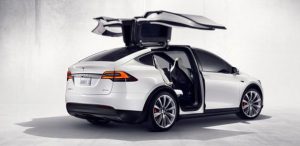 EV and hybrid sales: Plug-in electric vehicle sales were up substantially month-over-month and year-over-year – 17% over January and 6.7% over February 2014. The Tesla Model S, Chevrolet Volt, and Ford Fusion Energi saw sizable gains over last year, while the Nissan Leaf was down 22.4%.The Nissan Leaf has been declining in its position as the clear market leader, coming in fourth place for the first time, narrowly behind the Ford Fusion Energi plug-in hybrid. Tesla is continuing to take the lead in overall electric vehicle sales, with the Model S far ahead of the Chevrolet Volt and Nissan Leaf – and the recently launched Model X seeing a 25% increase in sales over January 2016. Hybrids continue to be hurt by low gasoline prices, declining to 1.8% of overall market share when it was in the 2.5% range for a long time. Sales were down nearly 10% since last year.
EV and hybrid sales: Plug-in electric vehicle sales were up substantially month-over-month and year-over-year – 17% over January and 6.7% over February 2014. The Tesla Model S, Chevrolet Volt, and Ford Fusion Energi saw sizable gains over last year, while the Nissan Leaf was down 22.4%.The Nissan Leaf has been declining in its position as the clear market leader, coming in fourth place for the first time, narrowly behind the Ford Fusion Energi plug-in hybrid. Tesla is continuing to take the lead in overall electric vehicle sales, with the Model S far ahead of the Chevrolet Volt and Nissan Leaf – and the recently launched Model X seeing a 25% increase in sales over January 2016. Hybrids continue to be hurt by low gasoline prices, declining to 1.8% of overall market share when it was in the 2.5% range for a long time. Sales were down nearly 10% since last year.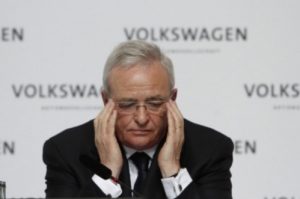 Volkswagen AG is facing a catastrophe that will probably take years to recover from. The outcomes of government agency rulings, recalls, and class-action lawsuits will tap into VW’s cash reserves – and will dictate its future strategic planning. It’s the “perfect storm” as automakers compete to dominate global markets; compliance with national emissions standards, for the most part, is being enforced; OEMs face unattainable expectations on advanced technology innovations; and consumers expect major corporations to live with a fairly high level of accountability and transparency.
Volkswagen AG is facing a catastrophe that will probably take years to recover from. The outcomes of government agency rulings, recalls, and class-action lawsuits will tap into VW’s cash reserves – and will dictate its future strategic planning. It’s the “perfect storm” as automakers compete to dominate global markets; compliance with national emissions standards, for the most part, is being enforced; OEMs face unattainable expectations on advanced technology innovations; and consumers expect major corporations to live with a fairly high level of accountability and transparency.